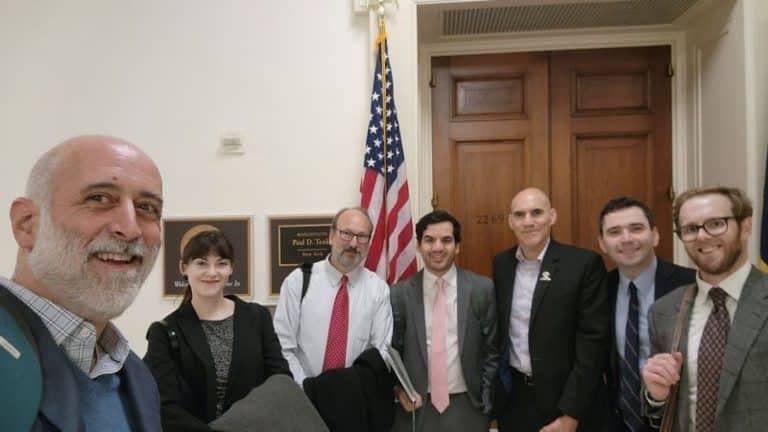On Tuesday, September 8, President Trump announced a memorandum halting portions of his Administration’s previous proposal to vastly expand offshore drilling around the United States, while ignoring the rest of his massive drilling agenda.

Background
As of the morning of September 8–before the memo was released–the Trump Administration’s offshore oil and gas program sought to expand oil and gas drilling as close as 3 miles to shore along the entirety of the coasts of the lower 48 states, including the Atlantic, Straits of Florida, Gulf of Mexico, and Pacific (and 10 miles from shore along the Texas and Florida Gulf coasts). The decision to pursue this vast expansion belonged entirely to the Trump Administration since the Obama Administration had already backed off plans to expand offshore drilling in the Atlantic and even denied Atlantic permits for the risky seismic airgun exploration that precedes drilling.
Also as of the morning of September 8–before the memo was released–the only government force pushing for expanded drilling in the Atlantic, Eastern Gulf of Mexico, and the Pacific Ocean was the Trump Administration. There are currently no formal government plans for new oil and gas leasing in these areas, except for those advanced by President Trump himself.

President Trump has aggressively advanced his plans for expanded offshore drilling and was very intentional in ordering offshore oil and gas lease sales off the coast of Florida and the rest of the Southeast, as outlined in his America First Offshore Energy Strategy Executive Order, issued in April 2017. In the Order, President Trump actually orders “annual lease sales, to the maximum extent permitted by law” in the Mid- and South Atlantic (covering Central Florida to Delaware), and through this order, President Trump started the process of overturning the current federal offshore drilling program a few years early showing that he simply could not wait for the current plan to expire before expanding drilling. Furthermore, the order directed the Secretaries of the Interior and Commerce to hasten approval of permits for risky seismic airgun exploration that precede drilling “to the maximum extent permitted by law.”
These provisions show President Trump has made a concerted effort to overturn protections put in place by President Obama to advance offshore drilling and the risky exploration that comes first along the Southeast coast.
What the Action Does and Doesn’t Cover
President Trump’s memorandum on Tuesday backtracks on part of his drive toward drilling but leaves much of the country–and much of the Carolinas–at just as much risk as before this new memorandum was put forth.
In Tuesday’s memo, the President has committed to rescind his proposal for drilling in the Eastern Gulf of Mexico, the ocean area off of Florida and Georgia, and some of the ocean areas off of South Carolina, and placed a presidential moratorium on leasing for oil and gas in these areas until 2032.
The memo has left in place the proposal to allow drilling as close as 3 miles from shore along North Carolina’s entire coastline, which also means for South Carolina that Trump’s proposed drilling could come as close as about 11 miles to North Myrtle Beach and about 24 miles to Myrtle Beach.
For reference, the Deepwater Horizon rig was drilling about 50 miles from shore, and its oil washed up along a 1,000 mile-long stretch of coastline, from Texas to Florida.
The President’s memo on Tuesday also keeps in place his proposal to open the mid-Atlantic coast (North Carolina to Delaware), the North Atlantic coast (New Jersey to Maine), and the entire Pacific coast. See the map below.

The executive action also does not stop the President’s push for risky seismic airgun exploration for oil and gas in the Atlantic.
*editor’s note, Sept. 17, 2020: North Carolina Governor Roy Cooper has written a letter to the President, asking for him to expand the drilling exclusion to offshore North Carolina as well.
Verdict
It is difficult to cheer for the President’s action when it stops far short of addressing the myriad threats to the coast that the President himself created. While I wish I could say it seems that the Trump Administration has turned a corner and seen that expanded offshore drilling is risky and unneeded, the failure of the Administration to walk back its proposal to open the mid- and North-Atlantic, the Pacific, and Alaska’s coast for drilling suggests that the President may continue his reckless drive to drill.
If President Trump were serious about protecting the Southeast’s shores from offshore drilling, he would further pledge to sign the bipartisan bills passed by the House of Representatives (H.R. 205, championed by Francis Rooney, and H.R. 1941, championed by Joe Cunningham) and tell Senator Majority Leader Mitch McConnell to bring them to a vote in the Senate. While the President’s memorandum bans oil and gas leasing in the Eastern Gulf, along Florida’s coast, and the South Atlantic from 2022 to 2032, such a time-bound presidential moratorium is not as legally enforceable as a Congressional moratorium. The Congressional bills on the other hand would create widespread and long-lasting Congressional moratoriums on drilling that would create an environmental legacy spanning well beyond President Trump’s time in office.
Alternatives to Offshore Drilling
The Deepwater Horizon spill in 2010 was a wake-up call about the need to transition away from offshore drilling, and the dangers associated with this very risky fuel source. The good news is that a separate trend is underway that may make offshore drilling obsolete. The electrification of transportation is in the beginning phases of displacing a whole lot of oil demand in the coming years. Furthermore, offshore wind energy is advancing at a remarkable pace in the United States, and shows promise for allowing coastal states to develop clean, renewable offshore energy, rather than offshore oil and gas.
Join us to help promote electric vehicles, and oppose offshore drilling



